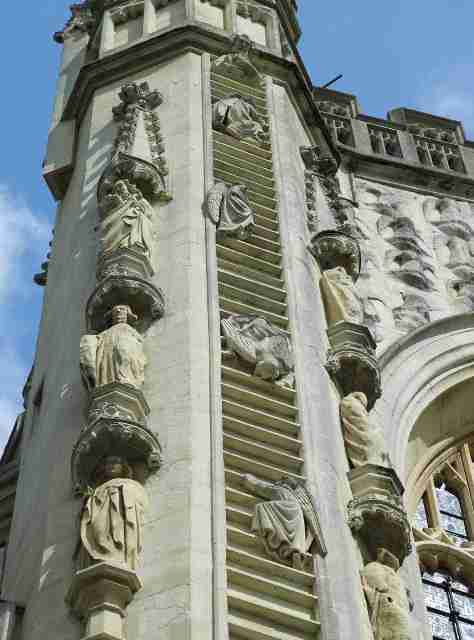
The present Abbey church as we know it was started around 1499, but was not complete by the time King Henry VIII initiated the Dissolution of the Monasteries in 1539. At this time, the monastery was still occupied and the church which Bishop King had begun was being used daily for prayer and worship. But the monks knew their days were numbered; and on January 27th, 1539, the site was surrendered to the crown.
The Church Commissioners offered the church to the city for 500 marks (roughly the equivalent of £160,000 today), but amazingly this was turned down, showing how far the Abbey’s standing had fallen. Similar to the fates suffered by many other great priories and churches during this time, all the valuable parts of the building were taken away, for example the beautiful stained glass windows were ripped out and the roof was stripped for the lead. In 1542 the empty shell was sold, along with the monastery, to Humphrey Colles, who sold it on to Matthew Colthurst.
In 1535 John Leyland, traveller and antiquarian visited Bath. He reported that
“Oliver King, Bishop of Bath, began of late days a right goodly new church at the west part of the old church of St Peter and finished a great piece of it. The residue of it was since made by the priors of Bath and especially by Gibbes, the last prior there, that spent a great sum of money on that fabric.”
The first sight most visitors have of Bath Abbey is the West front, with its unique ladders of Angels. The story behind this is that Bishop Oliver King is said to have had a dream of ascending and descending angels which inspired the design of the facade thousands of people gaze up at and admire today. Whatever the truth of this story, it was Bishop King who was the driving force behind plans to tear down the decaying Norman cathedral and replace it with a new building – one of the last great medieval cathedrals to be built in England.

